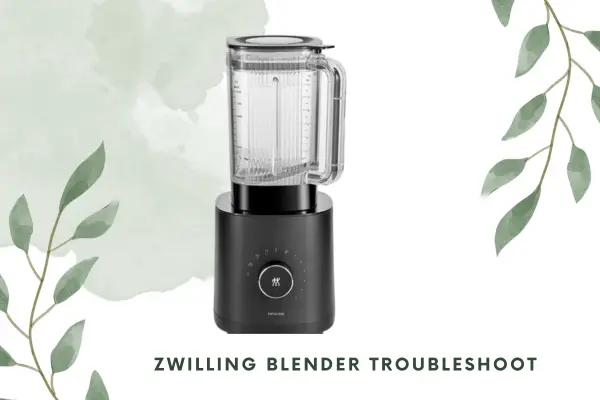Zwilling blenders are known for their quality and performance, but even the best appliances can encounter problems. If your Zwilling blender is giving you trouble, don’t despair! This guide will help you diagnose the issue and restore your blender.
Before We Begin:
- Identify your model: Knowing the specific model of your Zwilling blender is crucial for troubleshooting. You can usually find the model number on the bottom of the base unit or in the user manual.
- Check the basics: Ensure the blender is plugged in securely, the container is attached correctly, and the power switch is turned on.
- consult the manual: Zwilling provides detailed troubleshooting information in their user manuals. Refer to yours for specific instructions related to your model.
Common Zwilling Blender Issues:
- Power supply: Verify the outlet is working, and the plug is securely connected.
- Safety interlock: Make sure the container is properly attached, and the lid is locked securely. Some models have safety interlocks that prevent the blender from operating if these conditions aren’t met.
- Overload protection: If you’ve overloaded the blender with too much food or liquid, it might have shut down automatically. Reduce the amount and try again.
- Internal malfunction: If the above steps don’t resolve the issue, your blender might have an internal malfunction. Contact Zwilling customer service for assistance.
2. Blender Makes Strange Noises:
- Dull blades: Over time, blades can become dull, causing grinding noises. Consider having them sharpened or replaced.
- Food blockage: Check for food particles stuck under the blades or around the container base, causing the motor to strain. Remove any obstructions and clean thoroughly.
- Bearing issues: If the noise persists, it could indicate worn bearings. Contact Zwilling customer service for repairs.
3. Leaking:
- Faulty gasket: The rubber gasket around the container lid might be worn or damaged, causing leaks. Replace the gasket with a new one.
- Cracked container: Inspect the container for cracks or chips, which can also cause leaks. If damaged, replace the container.
- Overfilling: Don’t exceed the maximum fill line indicated on the container. Overfilling can put pressure on the seal and cause leaks.
4. Error Codes:
Some Zwilling models display error codes to indicate specific problems. Refer to your user manual for the meanings of these codes and suggested solutions.
Additional Tips:
- Clean your blender regularly: Proper cleaning ensures smooth operation and prevents food buildup that can cause problems.
- Use the correct settings: Choose the appropriate speed and pulse settings for your desired blending task.
- Don’t overload the blender: Follow the recommended capacity guidelines for your model.
- Use genuine Zwilling parts: When replacing blades, gaskets, or other components, use Zwilling-approved parts for optimal performance and safety.
If you’ve tried these troubleshooting steps and your Zwilling blender is still not working, contact Zwilling customer service for further assistance. They can provide personalized support and help you get your blender back in action.
By following these tips and referring to your user manual, you can diagnose and resolve the most common Zwilling blender issues. Remember, regular maintenance and proper use will help you enjoy your Zwilling blender for years to come!
Related articles


